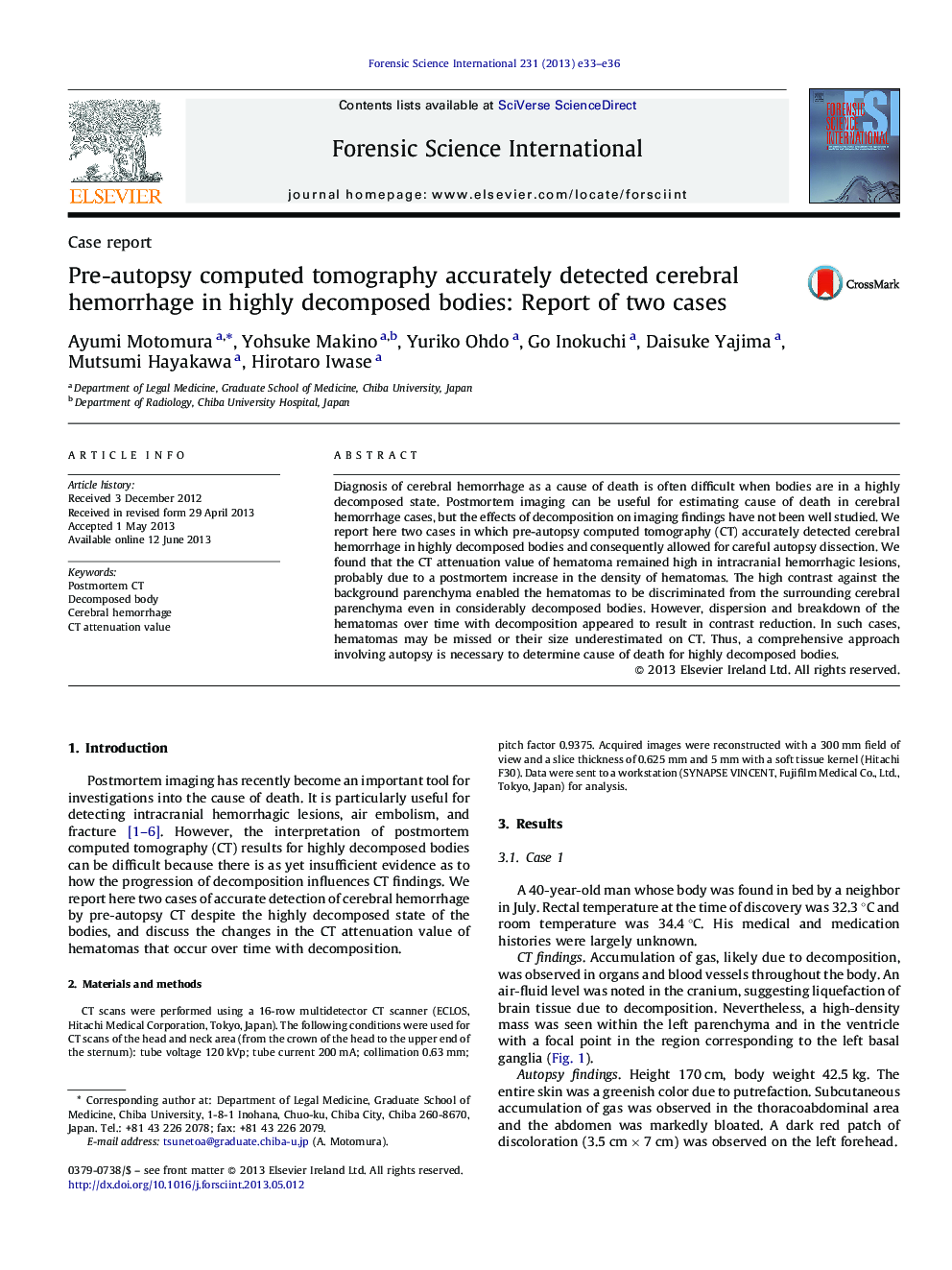| Article ID | Journal | Published Year | Pages | File Type |
|---|---|---|---|---|
| 95881 | Forensic Science International | 2013 | 4 Pages |
Diagnosis of cerebral hemorrhage as a cause of death is often difficult when bodies are in a highly decomposed state. Postmortem imaging can be useful for estimating cause of death in cerebral hemorrhage cases, but the effects of decomposition on imaging findings have not been well studied. We report here two cases in which pre-autopsy computed tomography (CT) accurately detected cerebral hemorrhage in highly decomposed bodies and consequently allowed for careful autopsy dissection. We found that the CT attenuation value of hematoma remained high in intracranial hemorrhagic lesions, probably due to a postmortem increase in the density of hematomas. The high contrast against the background parenchyma enabled the hematomas to be discriminated from the surrounding cerebral parenchyma even in considerably decomposed bodies. However, dispersion and breakdown of the hematomas over time with decomposition appeared to result in contrast reduction. In such cases, hematomas may be missed or their size underestimated on CT. Thus, a comprehensive approach involving autopsy is necessary to determine cause of death for highly decomposed bodies.
